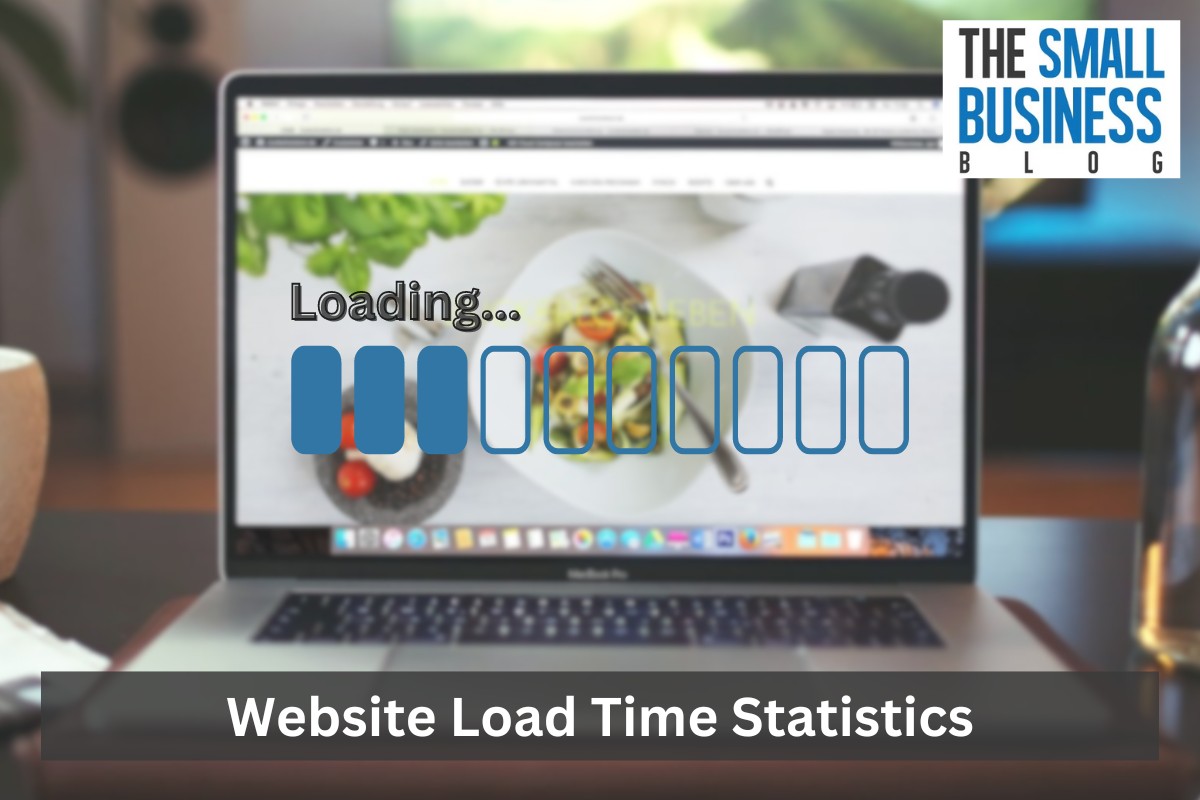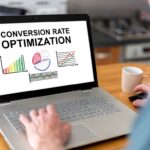Today, the speed at which a website loads can make a significant impact on user experience and overall success.
Website load time statistics provide insights into this crucial aspect of online presence.
Website load time refers to the duration it takes for a web page to fully appear on a user’s screen after they’ve clicked a link or entered a URL.
It’s not just a matter of convenience; it directly affects user engagement and conversion rates.
Research indicates that users expect websites to load within a few seconds, and any delay can lead to frustration and abandonment.
In this article, we’ll delve into the significance of Website Load Time Statistics and how they influence user behavior and website performance.
Post Contents
- 1 Key Statistics
- 2 General Website Load Time Statistics in 2024
- 2.1 1. The average loading time for desktop pages is 2.5 seconds
- 2.2 2. The average time it takes for a page to load on mobile devices is 8.6 seconds
- 2.3 3. Mobile web pages typically require 70.9% more time to load compared to their desktop counterparts
- 2.4 4. Roughly 77% of people who shop on their mobile phones prefer online stores that let them buy things fast
- 2.5 5. About 85% of mobile users expect websites to load faster on their phones than on desktops
- 2.6 6. Technology-related sites tend to load in about 6.8 seconds on average
- 2.7 7. The average First Input Delay (FID) of desktops is 12.73 milliseconds
- 2.8 8. Among Asian countries, China is the leader in mobile site loading efficiency
- 2.9 9. A mere one-second delay could potentially result in significant profit losses for any business
- 2.10 10. For every extra three-second delay in loading time, media sites lose 62.1 million users each month
- 2.11 11. The average time it takes for pages to load on the top 10 US e-commerce websites is 1.96 seconds
- 3 Website Loading Times and Bounce Rate Statistics
- 3.1 12. If a website takes 3 seconds or more to load, 40% of visitors abandon it
- 3.2 13. Loading times prolonged to 10 seconds cause a 123% bounce rate increase
- 3.3 14. The science sector has the highest bounce rate, reaching 66.37%
- 3.4 15. While mobile users face an average bounce rate of 56.8%, desktop users experience a slightly lower rate of 50%
- 4 Website Load Times and Conversion Rates Statistics
- 4.1 16. A page with a loading time of 1 second experiences an impressive conversion rate of 39%
- 4.2 17. Even a one-second delay in load time can result in a notable 7% reduction in conversions
- 4.3 18. E-commerce websites that load in 1 second have conversion rates that are 3 times higher
- 4.4 19. A B2B website that loads in 1 second has a conversion rate 5x higher than a B2B website that loads in 10 seconds
- 4.5 20. Around 69.57% of potential transactions are left incomplete due to unsatisfactory platform performance
- 4.6 21. E-commerce sites achieving a loading time of 1 second results in a conversion rate of 3.05% and a profit of $1,525.
- 4.7 22. Mobile websites that took two seconds or less to load have a 15% better conversion rate compared to the typical mobile site
- 5 Conclusion
Key Statistics
- On desktops, the average loading time is 2.5 seconds
- Mobile devices on the other hand take 8.6 seconds to load on average
- Loading times of 3 seconds or more result in 40% of visitors leaving
- 10 seconds of loading time cause an increase of 123% in bounce rates
- A loading time of 1 second creates 39% more consumer conversions
- Mobile users have a bounce rate of 56.8%, desktop users experience a lower rate of 50%
General Website Load Time Statistics in 2024

1. The average loading time for desktop pages is 2.5 seconds
Website load times, once a source of frustration for users, have undergone a transformative change.
The current average of 2.5 seconds represents a substantial improvement, as compared to the longer waiting periods experienced in the past.
This shift can be attributed to a combination of technological advancements, optimized coding practices, and an increased focus on user-centric design.
Modern internet users have grown accustomed to instant gratification, and this expectation extends to their online interactions.
A slow-loading website can deter visitors, leading to increased bounce rates and decreased engagement.
Recognizing this, businesses and developers have worked diligently to streamline the loading process.
(BrowserStack)
2. The average time it takes for a page to load on mobile devices is 8.6 seconds
When a user clicks a link or enters a URL, their expectation is for a quick access to the content they seek.
However, if a web page takes too long to load, frustration can set in, leading to a potential loss of engagement or even abandonment of the site altogether.
On the mobile platform, the average time it takes for a web page to load is currently measured at 8.6 seconds.
This seemingly small number carries significant implications for businesses and their online presence.
(BrowserStack)
3. Mobile web pages typically require 70.9% more time to load compared to their desktop counterparts
The gap between the browsing experiences on mobile devices and desktops has become increasingly apparent.
Notably, loading times emerge as a significant concern.
On average, mobile web pages lag behind their desktop counterparts by a substantial 70.9%.
This delay not only tests the patience of users but also significantly impacts their engagement and satisfaction levels.
The importance of responsive design and optimization strategies cannot be overstated in this context.
Developers are now faced with a critical task: prioritizing the mobile browsing experience.
These steps are crucial for crafting a seamless online journey that caters to the needs of all users.
(ToolTester)
4. Roughly 77% of people who shop on their mobile phones prefer online stores that let them buy things fast
A website’s load time can significantly shape user experiences.
About 77% of mobile consumers show a preference for eCommerce websites that offer rapid purchasing options.
This statistic shows the crucial role that website load time plays in influencing user behavior and driving sales.
When it comes to mobile eCommerce, every second counts.
Research has shown that the majority of mobile users are drawn to platforms that prioritize efficiency.
This means that if a website loads quickly, users are more likely to explore products, add items to their carts, and complete transactions.
(Technumero)
5. About 85% of mobile users expect websites to load faster on their phones than on desktops
Mobile devices, with their convenience, have raised the bar for loading expectations.
Two-thirds of individuals using smartphones express the anticipation that web pages will load within a span of 4 seconds or even quicker, and around 85% of mobile users now anticipate that web pages should load quicker on their phones than on traditional desktop computers.
Slow-loading pages can result in user frustration, increased bounce rates, and potential loss of revenue.
As attention spans continue to decrease, every second counts in retaining user interest.
(Radware)
6. Technology-related sites tend to load in about 6.8 seconds on average
The speed at which a website loads has a profound impact on how users interact with it.
This holds true across various industries, as industry standards emphasize this aspect of user satisfaction.
Every millisecond matters here, and it’s crucial for companies to bridge any gaps in loading times.
Neglecting this could lead to losing potential customers who lack patience.
This fundamental rule applies universally, highlighting the vital importance of loading times in fostering meaningful user interactions.
The following are the average time it takes for industry websites to load:
- Technology sites take an average of 6.8 seconds to load
- Travel sites take an average of 6.7 seconds to load
- Consumer packaged goods sites take an average of 6.1 seconds to load
- Retail sites take an average of 6 seconds to load
- Automotive retail sites take an average 6 seconds to load
- Healthcare sites take an average of 5.6 seconds to load
- Media sites take an average of 5.5 seconds to load
- Finance sites take an average of 5.1 seconds to load
(Hobo SEO Consultancy)
7. The average First Input Delay (FID) of desktops is 12.73 milliseconds
First Input Delay (FID) refers to the time delay between when a user interacts with a web page, such as clicking a button or tapping a link, and when the page responds by actually starting to process that action.
In simpler terms, FID measures how quickly a website reacts to a user’s first interaction.
When we examine the First Input Delay (FID) speeds, an interesting difference emerges between desktop and mobile devices.
On average, the FID speed for desktops is 12.73 milliseconds, while for mobile devices, it is 59.73 milliseconds.
This showcases a substantial difference of 47 milliseconds between the two platforms.
(BrowserStack)
8. Among Asian countries, China is the leader in mobile site loading efficiency

In the Asia Pacific region, China stands out as the top performer in mobile site load efficiency, with a commendable 5.4-second load time.
Singapore closely follows with a load time of seven seconds.
However, both countries still fall short of the desired benchmark of three seconds, indicating room for improvement.
The importance of speed becomes even clearer when examining a thorough study: a mere one-second delay in mobile site loading in the region results in a substantial 20% decrease in conversion rates.
This emphasizes the crucial connection between loading speed and user engagement, highlighting the need for businesses to prioritize optimization to achieve better online success.
(Statista)
9. A mere one-second delay could potentially result in significant profit losses for any business
Time matters significantly in determining profits or losses.
Amazon and Google have emphasized the importance of fast webpage loading.
Amazon’s analysis shows that even a 1 second delay could lead to a $1.6 billion loss in annual sales.
Google found that a 0.4 second delay in search results could result in an 8 million daily search loss.
This delay could also reduce online ad delivery.
Amazon’s study indicates that a 100-millisecond delay corresponds to a 1% sales drop.
Extending this, a two-second delay could lead to a 20% revenue reduction.
For e-commerce, this highlights the impact of latency.
The connection between speed and success is clear, urging businesses to optimize their digital platforms.
(FastCompany)
10. For every extra three-second delay in loading time, media sites lose 62.1 million users each month
The speed at which websites load has a great impact on user engagement.
This holds especially true for large media sites.
A notable example is the British Broadcasting Company, widely known as the BBC, which encompasses a spectrum of radio, TV shows, and an online media platform delivering global news stories.
With an impressive monthly user count averaging at 207 million, the BBC’s online platform attracts a massive audience seeking to stay informed.
However, the reality is that for every second it takes their pages to load, they experience a 10% decrease in user numbers, leading to a tangible loss in user engagement.
Here’s the number of users they lose with every second as their pages load:
- 62.1 million users are lost per month for every additional 3 seconds in load time
- 41.4 million users are lost every month for every additional 2 seconds in load time
- 20.7 million users are lost every month for every additional 1 second in load time
(Blogging Wizard)
11. The average time it takes for pages to load on the top 10 US e-commerce websites is 1.96 seconds
Online consumers are known for their high expectations and impatience.
Websites that load slowly have the potential to deter potential buyers, resulting in missed sales opportunities and a dissatisfied user community.
A recent study revealed that the top 10 e-commerce websites in the US have an average page load time of 1.96 seconds.
This is the outcome of careful optimization work focused on reducing waiting times for users.
These e-commerce platforms have refined their systems, reduced unnecessary components, and utilized different technological improvements to guarantee a seamless and fast shopping experience.
(Blogging Wizard)
Website Loading Times and Bounce Rate Statistics
12. If a website takes 3 seconds or more to load, 40% of visitors abandon it
For optimal results, a website should load in about three seconds, or even faster, especially if it’s an online store.
A quick glance at Google’s first search page reveals an average page speed of approximately 1.65 seconds.
The limit lies between two to three seconds, as this is where bounce rates surge.
Surprisingly, around 40% of visitors won’t stick around beyond three seconds, opting to abandon a site that takes longer to load.
In essence, fast loading times can make a significant difference in retaining potential customers.
(Technumero)
13. Loading times prolonged to 10 seconds cause a 123% bounce rate increase
Studies have unearthed a critical threshold at the 10-second mark.
If a website takes longer than 10 seconds to load, the likelihood of visitors bouncing off increases significantly.
This phenomenon is backed by a compelling statistic: a 123% surge in bounce rates is observed when load times breach this threshold.
The following statistics emphasize how loading speed increases bounce rate:
- Page load times increasing from 1s to 10s causes a 123% bounce rate increase
- Page load times increasing from 1s to 6s causes a 106% bounce rate increase
- Page load times increasing from 1s to 5s causes a 90% bounce rate increase
- Page load times increasing from 1s to 3s causes a 32% bounce rate increase
(WebBuilderExpert)
14. The science sector has the highest bounce rate, reaching 66.37%
Industries differ significantly in their user engagement.
The scientific sector stands out with the highest mobile bounce rate of 66.37%, indicating potential issues with their web platforms.
Furthermore, it’s evident that hosting informational content might pose challenges for retaining visitors.
Contrasting this, the retail sector boasts the lowest overall bounce rate at 41.91% on tablet devices.
This suggests a behavior of deliberate product comparison, where users navigate through options before finalizing a purchase verdict.
(ToolTester)
15. While mobile users face an average bounce rate of 56.8%, desktop users experience a slightly lower rate of 50%
When it comes to mobile users, statistics indicate an average bounce rate of 56.8%.
This means that more than half of the users navigating websites on their mobile devices tend to leave the page if it takes too long to load.
This quick departure can be attributed to the impatience that often accompanies mobile browsing.
Users expect instant access to information, and any delays can lead to frustration and abandonment.
Desktop users, while slightly more patient, still exhibit a significant bounce rate.
On average, 50% of users using desktop computers will bounce off a site that fails to load promptly.
This data underscores that even on larger screens with generally more stable connections, speed remains a crucial factor in retaining user attention.
(ToolTester)
Website Load Times and Conversion Rates Statistics

16. A page with a loading time of 1 second experiences an impressive conversion rate of 39%
In websites, a “conversion” typically refers to a desired action that a visitor takes.
This could encompass various actions, such as making a purchase, subscribing to a newsletter, signing up for a service, or filling out a contact form.
The conversion rate is the percentage of visitors who carry out this desired action compared to the total number of visitors.
Essentially, it’s a measure of a website’s effectiveness in turning casual visitors into engaged participants.
The decrease in conversion rate is apparent from the following statistics as the loading time increases:
- A page that loads in 1 seconds has an average conversion rate of 39%
- A page that loads in 2 seconds has an average conversion rate of 34%
- A page that loads in 3 seconds has an average conversion rate of 29%
- A page that loads in 4 seconds has an average conversion rate of 24%
- A page that loads in 5 seconds has an average conversion rate of 22%
- A page that loads in 6 seconds has an average conversion rate of 18%
(Portent)
17. Even a one-second delay in load time can result in a notable 7% reduction in conversions
As understood from the past statistics stated, research indicates a clear and direct connection between slow website loading times and elevated bounce rates.
Even the slightest one-second delay in a web page’s loading time has been demonstrated to lead to a notable 7% reduction in conversion rates.
Furthermore, 79% of individuals engaged in online shopping, who encounter dissatisfaction stemming from poor website performance, exhibit a decreased desire to revisit the same platform for subsequent purchases.
Disregarding this important optimization could prove harmful to a business’s ability to attract and retain customers, ultimately impacting its bottom line and overall success.
(Technumero)
18. E-commerce websites that load in 1 second have conversion rates that are 3 times higher
A split-second can be game-changing.
eCommerce sites that load almost instantly experience three times higher conversion rates.
This connection between loading speed and conversion rates emphasizes how crucial it is for businesses in the digital market to optimize website performance.
Shoppers’ attention spans are brief, and a sluggish site can discourage purchases.
By ensuring fast page loading, companies can seize customer interest, prompt transactions, and ultimately amplify revenue.
(Portent)
19. A B2B website that loads in 1 second has a conversion rate 5x higher than a B2B website that loads in 10 seconds
The statistics tell this: a business-to-business (B2B) website that loads in just 1 second enjoys a conversion rate that’s 5 times higher than a site taking 10 seconds to load.
This gap in conversion rates illustrates the critical need for optimizing website speed.
The modern digital audience demands immediate gratification, and when a website meets this demand, users are more inclined to stay engaged, explore further, and ultimately, complete the desired action.
When a website takes too long to load, users become impatient and are more likely to abandon the page in favor of a faster alternative.
This can result in lost opportunities for businesses, especially in the B2B sector where potential clients are often seeking efficient and reliable solutions.
(Portent)
20. Around 69.57% of potential transactions are left incomplete due to unsatisfactory platform performance
A remarkable 69.57% of virtual shopping carts are abandoned before purchases are finalized.
This emphasizes the widespread issue of slow website loading times affecting online businesses.
The high rate of cart abandonment due to slow loading speeds emphasizes the urgency to create solutions.
A slow website can stem from various factors, including bulky images, excessive code, poor server performance, and third-party integrations.
Fortunately, there are tangible steps that businesses can take to improve their platform’s performance and reduce transaction abandonment rates.
(Shopify)
21. E-commerce sites achieving a loading time of 1 second results in a conversion rate of 3.05% and a profit of $1,525.
Every fraction of a second matters in the digital space.
A well-optimized website that loads swiftly not only enhances user experience but directly contributes to your bottom line.
Prioritizing load time optimization is a strategic move that can lead to increased conversions and higher profits, making it an indispensable aspect of any successful online venture.
To further demonstrate this point, available data shows how much profit is lost due to slow loading times:
- A page that loads in 1 second sees a 3.05% conversion rate and results in a profit of $1,525
- A page that loads in 2 seconds sees a 1.68% conversion rate and results in a profit of $840
- A page that loads in 3 seconds sees a 1.12% conversion rate and results in a profit of $560
- A page that loads in 4 seconds sees a 2.93% conversion rate and results in a profit of $335
(Portent)
22. Mobile websites that took two seconds or less to load have a 15% better conversion rate compared to the typical mobile site

Mobile sites boasting a load time of two seconds or less exhibit a remarkable 15% higher conversion rate compared to the average mobile site.
This insight shows the significance of an optimized and efficient loading process in driving user engagement and subsequent actions
The rapid pace of modern life has cultivated a sense of impatience among online users.
They expect immediate access to information and services.
Consequently, websites that cater to this need for speed are more likely to retain users and guide them towards desired actions
(Technumero)
Conclusion
The swiftness with which a website loads displays notable influence over user engagement and overall success.
Website Load Time Statistics provide invaluable insights into this crucial aspect of online presence.
Website load time, which denotes the time taken for a web page to fully display after a user’s click or URL entry, goes beyond mere convenience.
It directly shapes user interactions and conversion rates.
Various industries exhibit diverse load time standards, underlining the universal rule that speed matters.
The consequence of load time variations ripple through key metrics like bounce rates and conversion rates.
Ultimately, the imperative of fast loading times has become a driving force for businesses to cultivate a seamless digital experience that not only attracts users but also drives conversions, propelling online success forward.






























